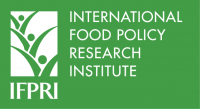
Common wisdom holds that rising price volatility in international food markets has translated into higher food price volatility in developing countries, particularly in Africa. This seems to be a logical assumption, as most African countries are net food importers, but is it actually the case? Not necessarily, according to a 2013 research brief by IFPRI researcher Nicholas Minot.
According to Minot’s findings, while international grain price volatility increased from 2007-2010, staple food prices (such as maize, rice, beans, and millet, as well as cooking oil and sorghum) in 11 African countries have generally not become more volatile over time. The study compared 67 prices for the periods 2003-2006 and 2007-2010. Of this total, two-thirds saw no statistically significant change in price volatility; moreover, while seven prices did experience increased volatility, 17 prices actually saw a significant decline.
Despite the fact that African prices seem not to have responded significantly to increasingly volatile world prices, price volatility within the region does remain high, particularly for cowpeas, maize, and beans. Perhaps surprisingly, maize price volatility appears significantly higher in countries whose governments actively intervened in domestic maize markets, such as Kenya, Malawi, Zambia, and Zimbabwe. In these four countries, maize prices were a full 50 percent more volatile in 2007-2010 than in the other study countries. While this finding could simply mean that maize price volatility is in general higher in these countries, it could also mean that government efforts to stabilize prices have in fact been counterproductive.
Minot’s research highlights the fact that food price volatility is a complex phenomenon, and one that is often widely misunderstood. The lack of transmission from global to domestic markets seen in the study suggests that, at least for Africa, global food price volatility may not be as much of a concern as previously thought; rather, it seems that African nations should be focused more on the level of food prices within the region. And while food price volatility in Africa remains high, it may be more effective for volatility reduction efforts to center around strengthening safety net programs (such as those proposed by the 2011 G20 Action Plan) and improving price and market information, rather than around traditional government price stabilization programs.
